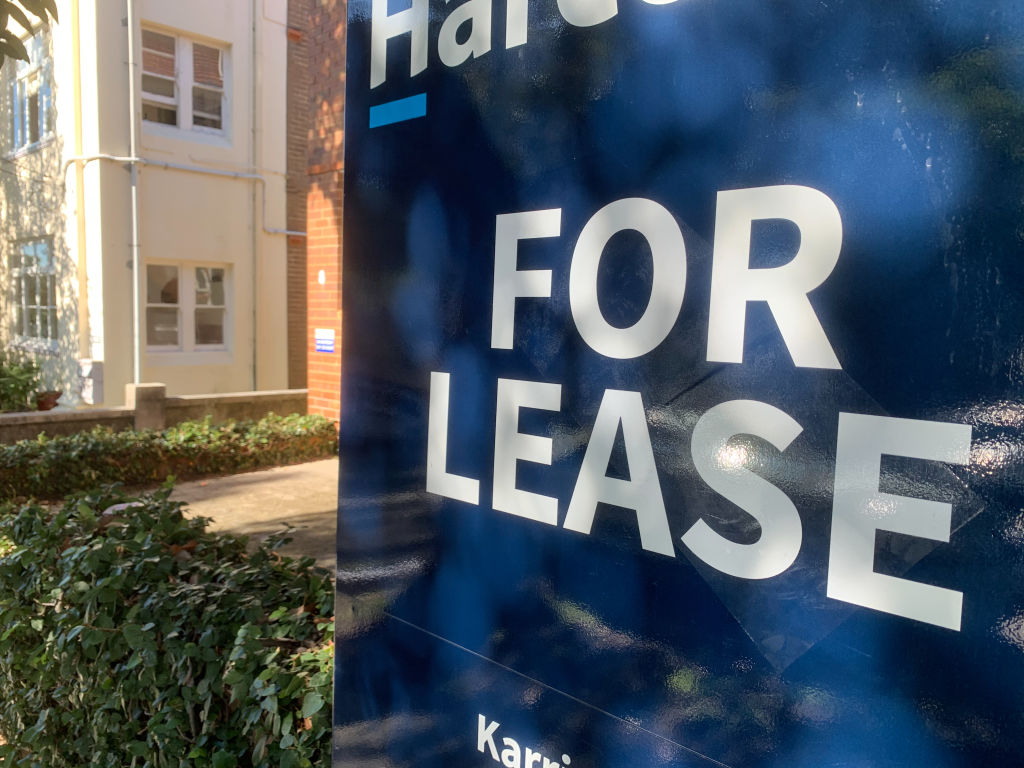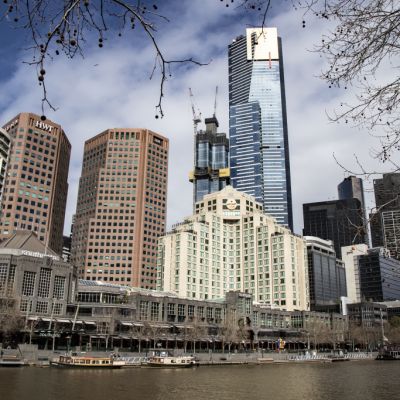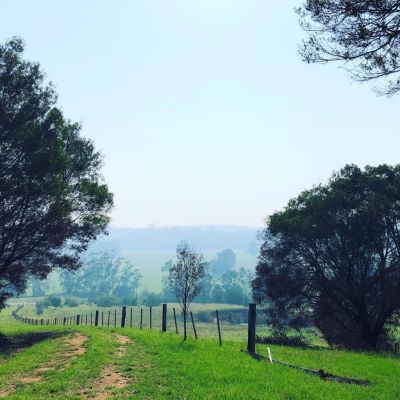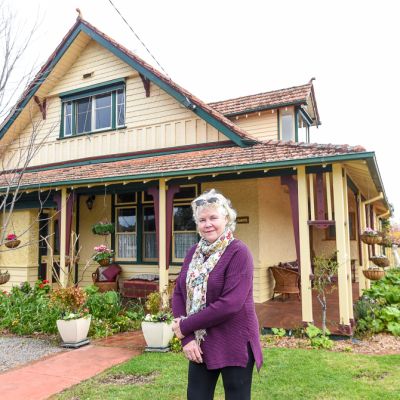Melbourne's empty rentals soar by 20 per cent in one month, other capitals hold strong

The number of vacant rentals in Melbourne has skyrocketed, with properties flooding the market and causing a spike in empty listings of 20 per cent last month alone, new data shows.
New data from Domain has laid bare the impact of the stage four lockdown on the rental market, revealing the portion of available, empty rental properties is up by a whopping 140.7 per cent compared to the same time last year.
Melbourne’s vacancy rate, which represents the portion of available, empty rental properties relative to the total stock of rental property, hit 3.8 per cent in August – a significant increase compared to its 1.6 per cent vacancy rate in August 2019.
Domain senior research analyst Dr Nicola Powell said the stage four lockdown, which banned all in-person property inspections, made searching for and moving to a rental challenging.
This, coupled with no international migration or tourism, had flooded the market with vacant properties, which in turn put downwards pressure on rent prices.
“We’re still going to see weakness in terms of rental prices,” Dr Powell said. “We do see a lot of demand from overseas – the market is not going to revert to normal until we see the international borders open.”
Elsewhere, the news was more positive. Rental markets in every other capital city fared far better, offsetting Melbourne’s rising vacancy rate to keep the national vacancy rate steady at 2.1 per cent.
Sydney’s vacancy rate also held steady, but at 3.5 per cent during August it was up from 3 per cent at the same time last year.
All other capitals recorded falling vacancy rates for August, except Adelaide where the rate was unchanged at 0.9 per cent.
Capital city rental vacancy rates – August 2020 |
|||||
| August 2020 | July 2020 | August 2019 | MoM ∆ | YoY ∆ | |
| Sydney | 3.5% | 3.5% | 3% | – | ↑ |
| Melbourne | 3.8% | 3.2% | 1.6% | ↑ | ↑ |
| Brisbane | 2.2% | 2.3% | 2.2% | ↓ | – |
| Perth | 1% | 1.3% | 2.7% | ↓ | ↓ |
| Adelaide | 0.9% | 0.9% | 0.8% | – | ↑ |
| Hobart | 0.6% | 0.7% | 0.4% | ↓ | ↑ |
| Canberra | 1% | 1.1% | 1.1% | ↓ | ↓ |
| Darwin | 1.3% | 1.7% | 3.4% | ↓ | ↓ |
| National | 2.1% | 2.1% | 1.9% | – | ↑ |
| Source: Domain Note: The vacancy rate represents the portion of available, empty rental properties relative to the total stock of rental property. The rental vacancy rate is based on adjusted Domain rental listings and will be subject to slight revisions over time. |
|||||
Dr Powell said it was important to note that the CBD unit markets, particularly those in Sydney and Melbourne, had recorded the largest spikes in empty rental listings, meaning rental markets in suburbs outside the CBD were likely to hold up far better.
St George Bank chief economist Besa Deda said once the vacancy rate hit 3 per cent it became a “renters’ market” – with Melbourne and Sydney both firmly in that camp, despite Sydney’s rate staying unchanged for the month.
“I think the trend will still be for the Sydney vacancy rate to move higher over the coming months,” Ms Deda said.
She said the steady or slightly lower rates in Brisbane (2.2 per cent down from 2.3 per cent), Canberra (1 per cent down from 1.1 per cent) and Adelaide (unchanged at 0.9 per cent) were unsurprising as those cities had seen more success at controlling COVID-19 outbreaks.
Darwin also saw lower vacancy rates for the month and the year – 1.3 per cent down from 1.7 and 3.4 per cent respectively – recording the most significant falls of all capital cities in both vacancy rates and vacant rental listings.
“Some housing markets are holding up better than others,” she said, also pinpointing Hobart (which saw vacancy rates fall by 0.1 per cent to 0.6 per cent for August) and Perth as performing well during the pandemic.
Vacant Rental Listings: August 2020 |
||
| MOM per cent change | YOY per cent change | |
| Sydney | -0.5% | 16.9% |
| Melbourne | 20.6% | 140.7% |
| Brisbane | -3.5% | 0.7% |
| Perth | -22.6% | -61.1% |
| Adelaide | -2% | 8.5% |
| Hobart | -15.3% | 37.5% |
| Canberra | -16.1% | -8.5% |
| Darwin | -25.4% | -61.8% |
| Source: Domain Note: Estimated vacant rental listings represent the portion of available, empty rental properties. Estimated vacant rentals are based off adjusted Domain rental listings and will be subject to slight revision over time. |
||
Perth’s vacancy rate fell to 1 per cent for the month down from 1.3 per cent in July and 2.7 per cent last year.
“WA is showing greater reliance in terms of economic activity compared to other states and territories, and part of that is that mining is one of the industries that is more resilient to the impact of the pandemic,” Ms Deda said.
Dr Powell said the Perth market was a “standout” and the falling vacancy rate, coupled with falling vacant rental listings (down 22.6 per cent for the month and 61.1 per cent for the year) showed the market was recovering from its years-long downturn.
“We would be talking about price growth if it wasn’t for COVID,” she said.
Real Estate Institute of Victoria president Leah Calnan expected rental activity in Melbourne to pick up once COVID-19-related stage four restrictions ended, just as it had in other cities after the first lockdowns in March and April. The restrictions are slated to ease in two weeks’ time, pending further announcements from the Victorian government expected on Sunday.
“Over the past 24 months our vacancy rate’s been running at under 2 per cent,” she said. “We’ll get back there again, it’s just going to be a bit of a slow process.”
But NAB chief economist Alan Oster said vacancy rates in Melbourne could rise further given the high number of vacant properties available, which essentially takes competition out of the rental market.
Asked if investors were more likely to sell, he said: “I don’t know is the short answer.”
“You hear some horror stories about the number of units that are vacant in the CBD. I think you just have to wait and see. Foreigners not coming, kids not at university – all those things are probably not leading in the right direction,” he said.
Ms Deda said low interest rates, mortgage moratoriums and a low number of properties available for sale were helping to support prices, but not enough to prevent price falls entirely.
“It certainly helps support demand, but you’ve still got the challenge of rising unemployment, the dent to household incomes, uncertainty about the outlook including uncertainty about people’s jobs,” she said. “The combination of those factors, I think, still means that dwelling prices will continue to soften over the rest of this year.”
With Elizabeth Redman
We recommend
We thought you might like
States
Capital Cities
Capital Cities - Rentals
Popular Areas
Allhomes
More










